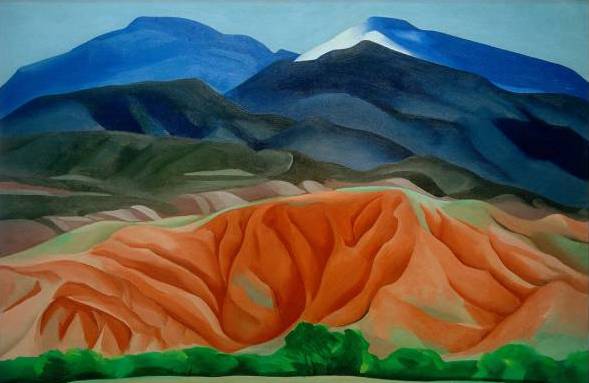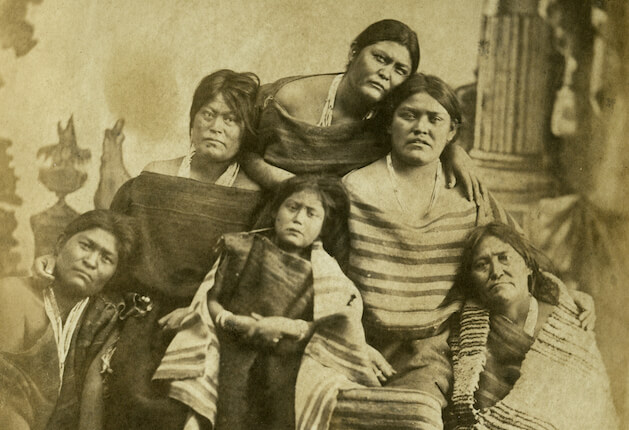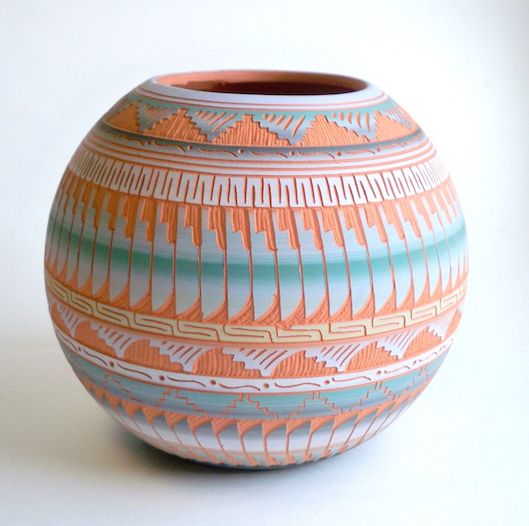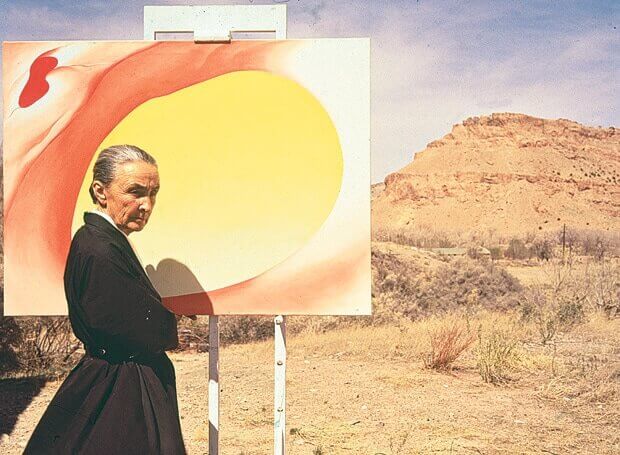During a chance visit, young Georgia O’Keeffe ended up in New Mexico. This led to the artist’s lifelong reflections on the geographical landscape. For this, we can partly thank the New Mexico art movement of the 20th century.
In this article, we’re trying to get an idea of New Mexico’s attraction to artists and why artists and writers come to New Mexico. In doing so, we will consider what is the rich artistic heritage of this place. We’ll give you a hint, it happened long before O’Keeffe got there! Let’s dive in!
Perhaps the most famous of the many artists who set up their easel in the arid desert of New Mexico is O’Keeffe. The endless shifting skies and bright lights of New Mexico may give us our first glimpse of why this region has captivated artists over the years.
Hearing of an artist fleeing the city or going to the countryside in search of artistic rejuvenation is not uncommon. Here, in the wilderness of New Mexico, one of the most famous New Mexico artists, O’Keeffe found an eternal source of inspiration.
Moreover, O’Keeffe was by no means alone in her discovery of the state. In fact, a multitude of other famous New Mexico artists of the 19th and 20th centuries including Henriette Wyeth, Peter Hurd, R.C. Gorman, Paul Burlin, Wilson Hurley, Sonny Rivera, Glenna Goodacre, Allan Houser, Luis Jimenez, Judy Chicago, Agnes Martin, Ken Price, and Bruce Nauman were all also been lured to the solitude and sweeping landscapes of this state, finding in it a source of refuge and artistic rebirth.

New Mexico is a state located in the southwestern United States. The climate and geography of New Mexico is very diverse, from forested mountains to rare deserts. This is the vast southern region, made up of the warmer and drier Chihuahua Desert, where many famous New Mexico artists such as O’Keeffe have been drawn.
Besides the obvious appeal of the region’s natural beauty, there is another reason why artists flock to New Mexico. This can be found in the existence of its native cultures, so different from its own artists. The 19th century saw the first buyers of migrating artists.
Many of the famous New Mexico artists chose the classical tradition of painting, which tended to romanticize the local life they were exposed to. The ethnic and cultural heritage of New Mexico can be described as rich. In prehistoric times, New Mexico was home to the ancestors of the Puebloans, Mogollon, and modern Comanches and Jutes.
Unfortunately, the artistic heritage of the Navajo and Apache peoples in the 15th century remains largely undiscovered due to post-colonial heritage. There is still often a tendency to overlook the artistic legacy of New Mexico’s natives and their descendants in favor of the big names of New Mexico’s famous modernism.

Through unstable domestic policy culminating in the Mexican Revolt of 1837, the region became increasingly dependent on the United States. This big power annexed the territory in 1848 at the end of the Mexican-American War.
With Puebloans, Mogollon, Navajos, and Apaches, as well as Spanish explorers and an influx of 20th-century modernist artists, this confluence of influences can only be described as an artistic and cultural melting pot.

Route 66 became a route to artistic freedom. El Camino Real de Tierra Adentro, the country’s oldest thoroughfare, played a critical role in transporting European colonists from Mexico to New Spain along a 1,200-mile trade route. The reason for the ease of migration came in the form of the commission of Route 66 in 1926.
New Mexico became a mecca for artists in the early 20th century. Georgia O’Keeffe represents the fine arts in New Mexico in the 20th century. O’Keeffe’s other favorite locations in New Mexico include Black Place, near Chaco Canyon, which she reimagined by grinding the area’s black earth into a concentration she applied directly to her canvas.
Demonstrating the diversity of the New Mexican landscape in her work, one of the most famous New Mexico artists, O’Keeffe also favored the White Place or Plaza Blanca as subject matter of her art.

























